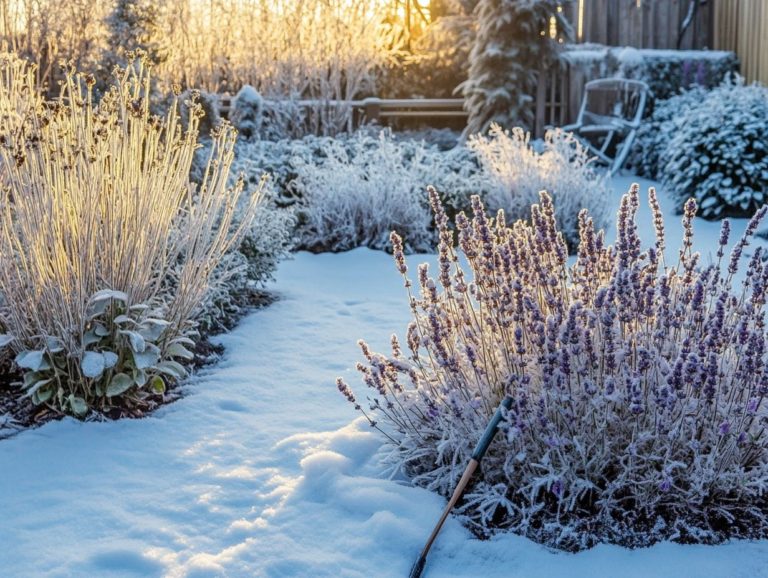Essential Pruning Techniques for Cold Climates
Pruning in cold climates goes beyond mere aesthetics; it is essential for the health and longevity of your plants and trees.
Grasping the right timing and techniques for pruning can significantly enhance their resilience against harsh winters. This guide will provide you with critical insights on the optimal timing and methods specifically designed for cold environments, including winter pruning techniques.
Get ready to uncover the best tools for your pruning journey and receive tailored advice for various plants.
It will also pinpoint common pitfalls to help you nurture your garden effectively throughout the colder months, ensuring effective water management and tree protection. Immerse yourself in the intricacies of winter pruning, and set your garden up for success!
Contents
Key Takeaways:
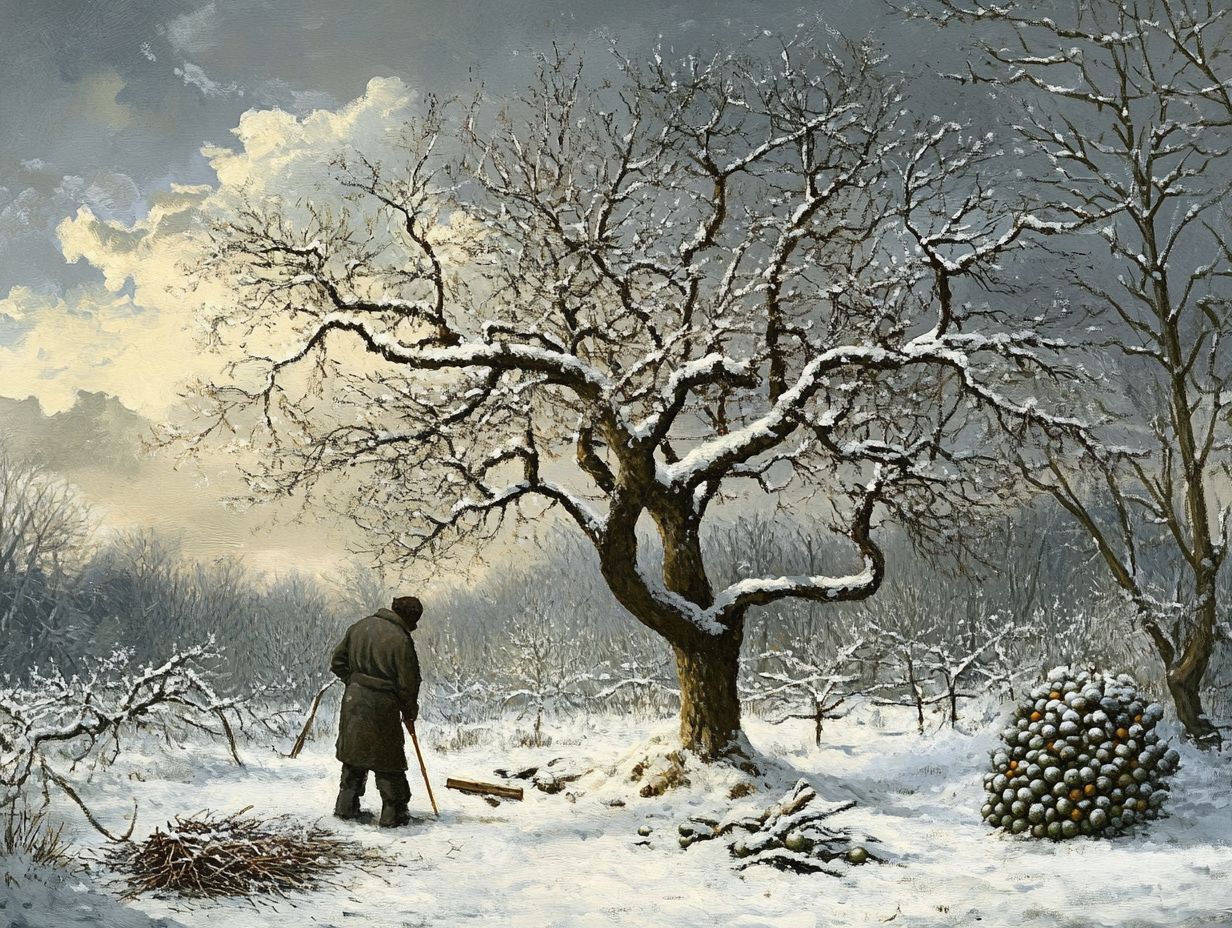
- Pruning is crucial in cold climates to promote healthy growth and prevent damage from harsh conditions.
- Timing is essential when pruning, as understanding the specific needs of each plant or tree leads to successful outcomes.
- Using recommended tools and proper techniques while avoiding common mistakes can ensure successful pruning.
Why is Pruning Important in Cold Climates?
Pruning is essential for maintaining optimal tree health, especially in colder climates where winter can put trees and shrubs under stress. To learn more about this important process, check out best practices for pruning in winter.
By mastering proper winter pruning techniques, you can enhance tree structure, stimulate growth, and prevent diseases that thrive during the inactive season when trees are least active.
It s crucial to recognize the importance of removing dead branches and keeping the right amount of water in the soil to safeguard your landscape throughout winter.
When you implement effective pruning practices, you not only boost tree vigor and resilience but also set the stage for lush growth in spring.
Winter pruning significantly lowers the risk of disease by eliminating potential hosts for pests and pathogens. Techniques like thinning cuts (which remove some branches to allow more light and air in) improve air circulation within the canopy, reducing humidity levels that can lead to fungal infections.
For instance, selectively cutting back branches can reshape the tree and foster a stronger framework for new growth. Additionally, winter pruning helps combat the effects of winter dryness by ensuring your trees maintain balanced moisture content, which is vital when roots are less active.
Through thoughtful pruning, you can cultivate healthier, more resilient trees that not only withstand harsh winters but also thrive in the warmer seasons.
When to Prune in Cold Climates
The optimal time to prune trees and shrubs in cold climates is during their dormant period, usually in late winter, just before new growth begins.
This timing, ideally right before spring, allows you to evaluate the tree’s structure without the distraction of foliage obscuring your view.
Pruning at this stage promotes the best possible health for your trees as they prepare for the upcoming growing season.
Timing and Considerations
When planning for winter care and pruning in cold climates, it s crucial to consider the specific needs of your trees and shrubs, along with the timing of your pruning techniques for optimal tree health.
This thoughtful approach leads to effective pruning outcomes and incorporates vital elements like water management and tree monitoring, ensuring your trees maintain their vigor.
In areas where temperatures can plummet, knowing when to prune is essential for fostering healthy growth and reducing the risk of disease.
For deciduous trees, late winter or early spring just before new growth kicks in is typically the best time to trim, ensuring growth stimulation and encouraging lush foliage in spring.
On the other hand, evergreens might need a different strategy; some could benefit from selective pruning in late summer, allowing them to recover fully before the cold sets in.
By employing techniques such as thinning cuts and heading cuts (which trim the tips of branches to promote bushiness), you can enhance air circulation and light penetration, ensuring your plants stay resilient and visually appealing throughout the chilly months.
Start your winter pruning now to ensure your garden thrives come spring! With the right techniques, your plants can not only survive winter but come back stronger than ever!
Tools and Techniques for Pruning in Cold Climates
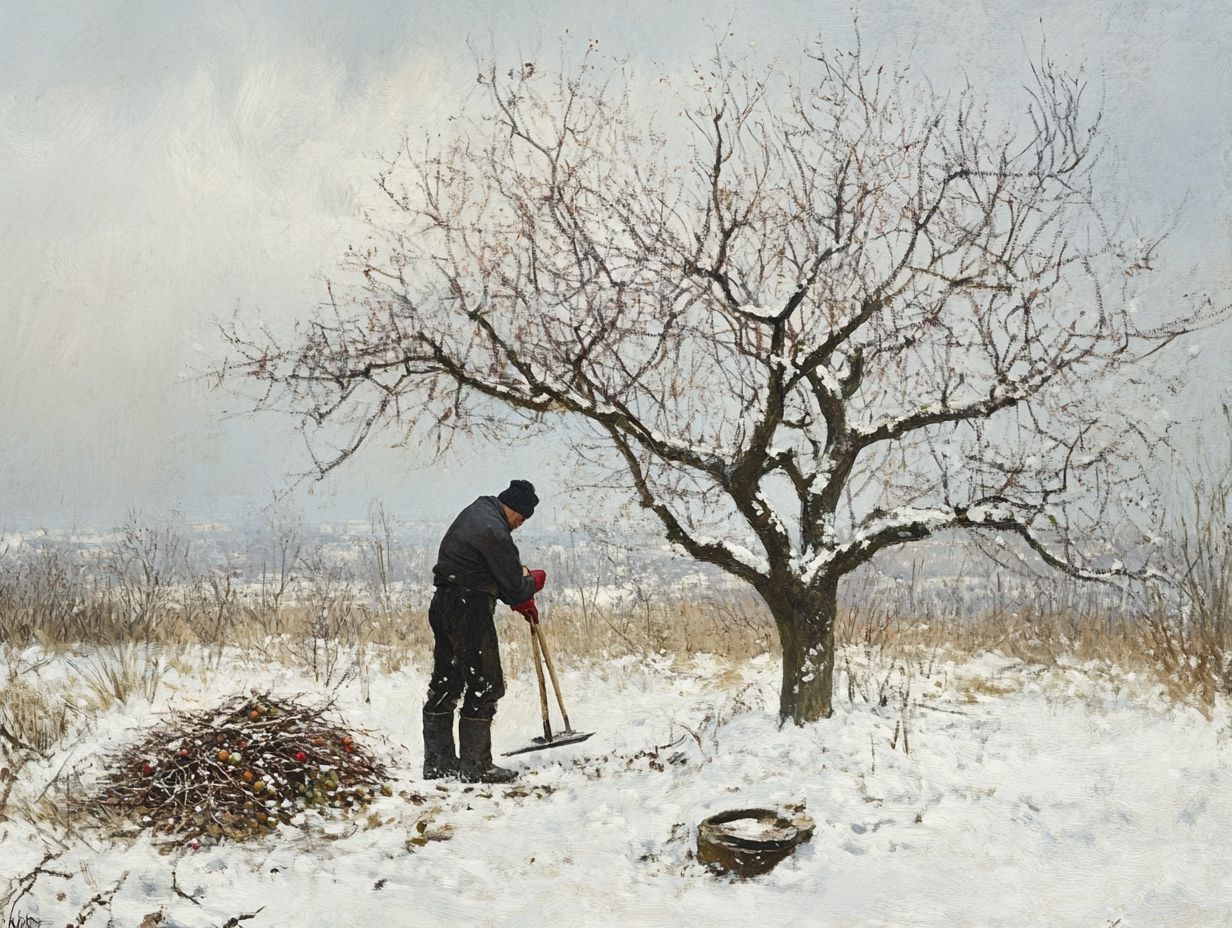
Utilizing the right pruning tools and equipment is crucial for effective winter maintenance in cold climates. Master the right pruning techniques to boost your trees’ health and longevity!
As a gardener, you must select tools that ensure safe pruning practices while tackling the unique challenges presented by winter conditions, including snow and ice accumulation on branches.
Recommended Tools and Proper Techniques
For effective tree trimming in cold climates, invest in top-notch pruning tools like sharp hand pruners, loppers, and saws. These tools help you achieve clean cuts that promote healthy tree growth.
Mastering proper pruning techniques enhances tree structure and prioritizes safety. This is vital in icy conditions to reduce injury risks.
To use these pruning tools efficiently, understand their specific functions and how they contribute to tree maintenance.
- Hand pruners are perfect for cutting smaller branches and can be conveniently used with one hand.
- Loppers are designed for tackling thicker limbs, thanks to their longer handles that provide increased leverage.
- Saws come into play for those larger branches, offering the necessary strength and reach.
When making your cuts, always aim for a sloping angle to encourage water runoff and prevent disease. Don t forget to wear gloves for a better grip, and opt for non-slip footwear to enhance safety ensuring that your pruning process remains effective and secure throughout the winter months.
Pruning for Specific Plants and Trees
Different plants and trees demand tailored pruning techniques to promote optimal growth and overall health, especially in colder climates where specific challenges emerge.
By understanding the unique requirements of flowering shrubs and deciduous trees, you can enhance their structure, improve nutrient flow, and bolster their defenses against harsh winter conditions.
Best Practices for Different Species
Implementing best practices for pruning techniques for trees and shrubs means grasping the specific techniques for both trees and shrub care. Tailoring these practices to the unique growth patterns and structural needs of each species is essential for enhancing tree growth and resilience, especially in colder climates.
For example, deciduous trees generally thrive when pruned during the time when trees are not growing actively, allowing them to allocate energy more effectively during the growing months. Some shrubs may require trimming in early spring to encourage new blooms, underscoring the importance of timing and technique tailored to each plant.
Proper pruning enhances your landscape’s beauty and reduces stress on plants. By dedicating attention to species-specific management, you can cultivate a thriving environment that supports long-term plant health and effectively combats environmental challenges.
Common Mistakes to Avoid in Cold Climate Pruning
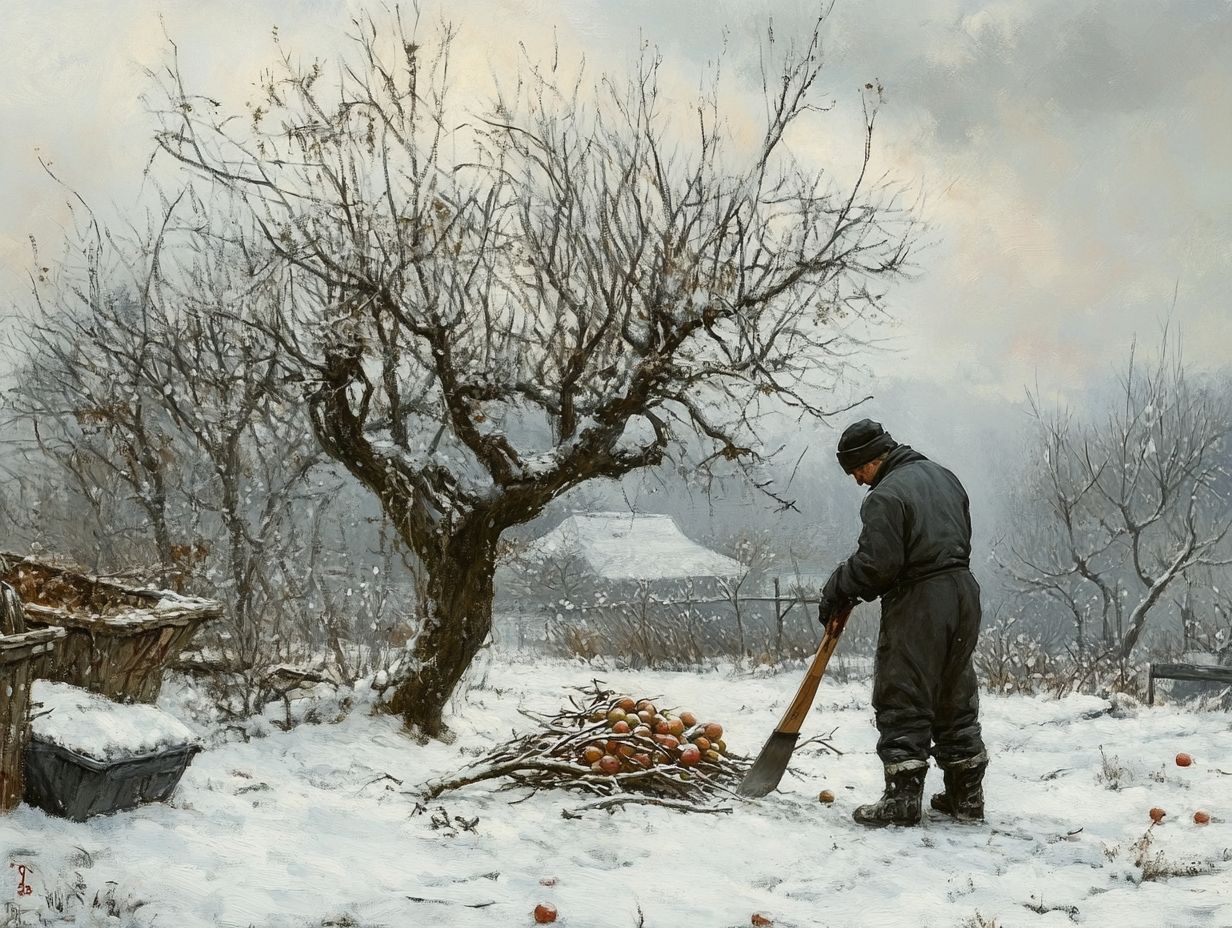
When pruning in cold climates, it s essential to sidestep common mistakes to safeguard the health and safety of your trees and shrubs. Miscalculating your pruning cuts and neglecting winter maintenance can lead to disease issues, diminish the vigor of your trees, and create potential hazards during severe weather.
Tips for Preventing Damage and Promoting Growth
To prevent damage and promote growth in cold climates, embrace essential pruning tips like regular tree monitoring and keeping the soil moist. These practices enhance tree health and make your trees resilient against winter stresses.
Consistently assess your trees and shrubs to catch early signs of stress or disease. This allows for timely interventions. Adding a layer of mulch at the base helps retain moisture and regulates soil temperature, protecting the roots from the cold.
Schedule periodic inspections to catch signs of pest activity or damage. Routine watering during dry spells is essential; it helps your trees withstand winter’s rigors. Prioritizing these strategies fosters a strong ecosystem, ensuring the longevity and vitality of your trees.
Frequently Asked Questions
What are essential pruning techniques for cold climates?
Essential pruning techniques include proper timing, choosing the right tools, and knowing the needs of different plants, such as shrubs and trees.
Why is timing important for pruning in cold climates?
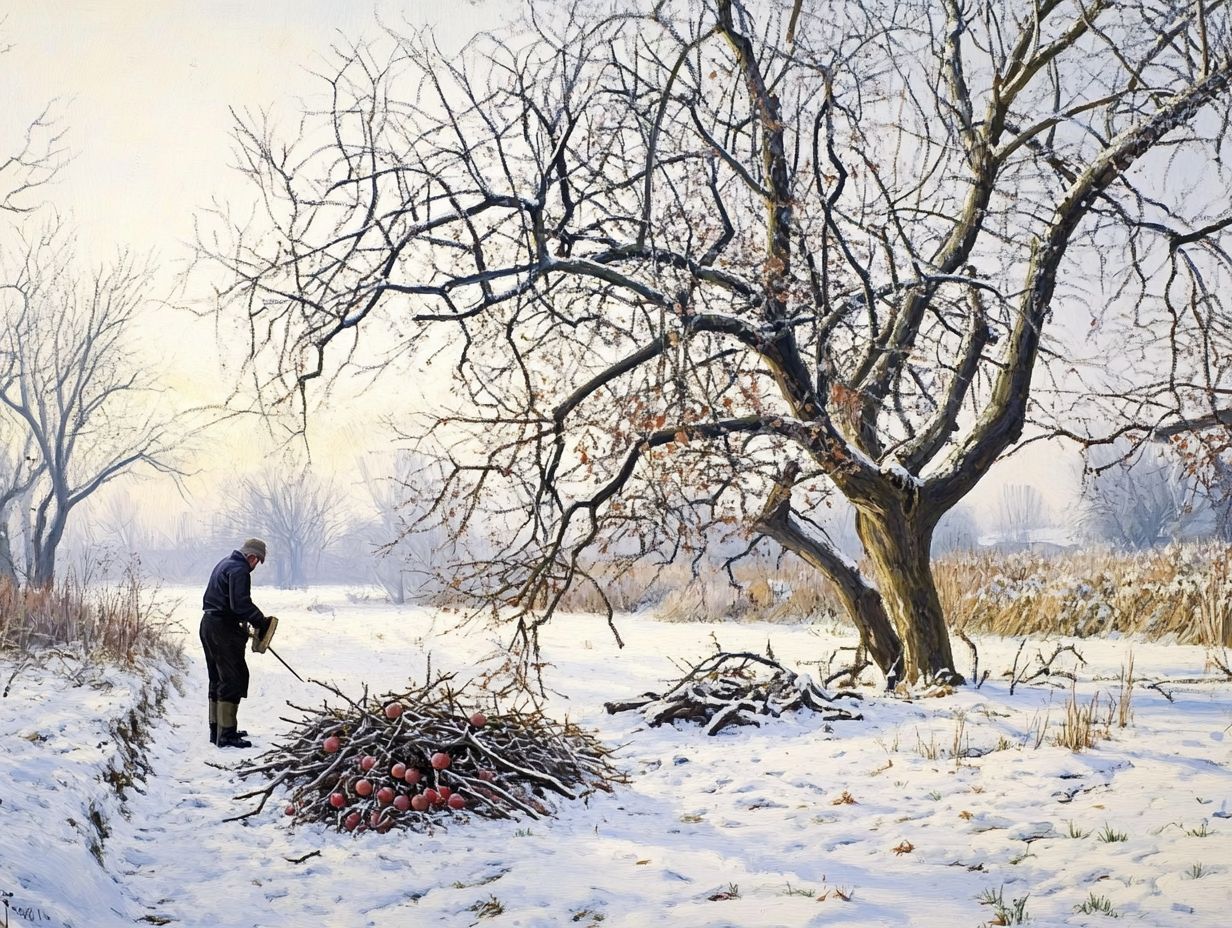
Timing is crucial because plants can be damaged in winter. Pruning at the wrong time leaves them vulnerable to frost.
What tools do I need for pruning in cold climates?
You’ll need sharp pruners, loppers, and a pruning saw for larger branches. A ladder helps reach higher branches.
Can I use the same pruning techniques for all plants?
No, different plants have unique needs. For example, fruit trees need different techniques than shrubs or evergreens.
How can I prevent damage during pruning?
Make clean cuts and avoid leaving stubs. Don t prune in extreme cold to reduce stress on the plant.
What precautions should I take when pruning?
Wear protective gear like gloves and eye protection. Have a plan for sudden weather changes, such as drops in temperature or snowfall.




